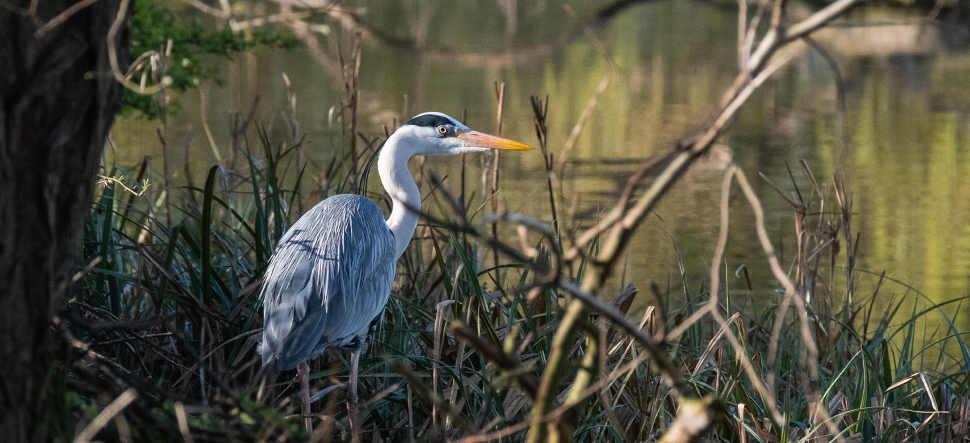
27, October 2023
5 Ways To Take Action For Our Rivers
Wherever you live in the UK, you won’t be far away from a river. Towns, cities and villages were built on rivers because of the water, transportation and power they provided. These days, we rely less on our rivers for daily essentials, but they’re still crucial to our health. Research shows that time spent close to rivers and canals can make us feel happy and healthy. And of course, rivers are rich sources of Nature, even in urban areas. But thanks to pollution (particularly sewage-dumping) and urbanisation, our rivers are in danger. We’ve lost 90% of our wetland habitats in the last 100 years. A shocking 0% of all rivers in England and Northern Ireland are classed as 'good overall', and currently none are safe to bathe in. So, what action can we take to help save our precious waterways?
1. Put Pen to Paper
One of the simplest ways to help our rivers is by signing a petition or writing to your MP. The more voices that speak out on behalf of our rivers, the more leaders are likely to listen. Here’s some action you can take before you leave your home:
- Sign River Action’s ‘Rescue Our Rivers’
- Sign this petition from Planet Patrol.
- Write to your MP. Planet Patrol have included a template to make this really easy here. And the Rivers Trust have some useful info here.
- Sign the Rights for Rivers Declaration, which calls for rivers all over the world to be protected by law.
- Keep an eye on the national and local news for more petitions you can sign.
2. Become a Water Tester
Earlier in autumn this year, Planet Patrol ran their first ever Race for Rivers. This 641km relay race for paddle-boarders covered the length of England’s connected waterways, with participants testing water quality en-route. It was a huge success, with more than 750 readings being taken and the results coming soon. But Planet Patrol don’t want to stop there. Fill in this form on their website to register your interest in becoming a voluntary water tester – no scientific background required!
3. Join the Big River Watch
The River Trust’s biannual Big River Watch Weekends are an opportunity to submit a survey on the health of your local river using an app. Over 5000 people took part in the first one, held on the 22nd-24th September 2023. The next Big River Watch Weekend will take place on 3rd-6th May 2024. If you can’t wait until then, the app and survey remain open to collect data all year round. It’s the perfect excuse to spend time down by the river, enjoying the sound of the flowing water and observing plants and wildlife that you might never have noticed before. As The Rivers Trust put it: “It’s good for you, and it’s good for our rivers.” Head here to find out more and download the app, as well as handy wildlife and pollution identification guides.
4. Join a Litter Pick
Litter is a huge problem for our rivers and the wildlife that lives in and around them. Aside from rubbish being dumped directly into water, much of the litter that gets dropped in our towns and cities makes its way into canals and rivers. Plus, we all know the damage that litter does to our oceans; 80% of it comes from land through rivers and waterways. Help the cause by joining in with a litter pick in your area – another great excuse to get out and enjoy Nature, as well as some gentle exercise.
The Rivers Trust is the parent organisation for 65 member trusts across Britain, Northern Ireland and Ireland. Click here to find your local branch and find out about joining a litter pick. If you happen to be reading this from elsewhere, River Cleanup has a list of international cleanup events here. And if you’re a paddle-boarder, why not combine your hobby with cleaning up? Find out how from Clear Access Clear Waters. The Canal & River Trust offers lots of volunteering opportunities too. It’s also worth following these organisations on social media to keep up to date with what’s happening in your area.
5. Bash Some Balsam
If you’ve taken a walk by the river in summer, chances are you’ve come across Himalayan balsam. This tall plant bears pink, orchid-like flowers and grows in abundance along our waterways – which isn’t a good thing. As its name suggests, this plant is from the Himalayas. It was introduced to the UK as a garden plant in 1839, but very quickly spread thanks to its clever way of seeding. Each plant produces up to 800 seeds; once a seed pod is ripe, it explodes, launching seeds up to seven metres away. Although it looks pretty, Himalayan balsam takes over, meaning other plants which play a vital part in biodiversity don’t stand a chance. And when autumn comes and the balsam dies back, it leaves riverbanks bare and more likely to erode.
Thankfully, there’s a way of controlling Himalayan balsam without harming the eco system: balsam-bashing! Said to be very therapeutic, it involves pulling up the shallow-rooted plants in early summer. The Wildlife Trusts, Canal & River Trust and Rivers Trust all organise balsam-bashing events in-season, or try googling ‘balsam bashing’ to find out about volunteering opportunities near you. Put a note in your diary for next May…




